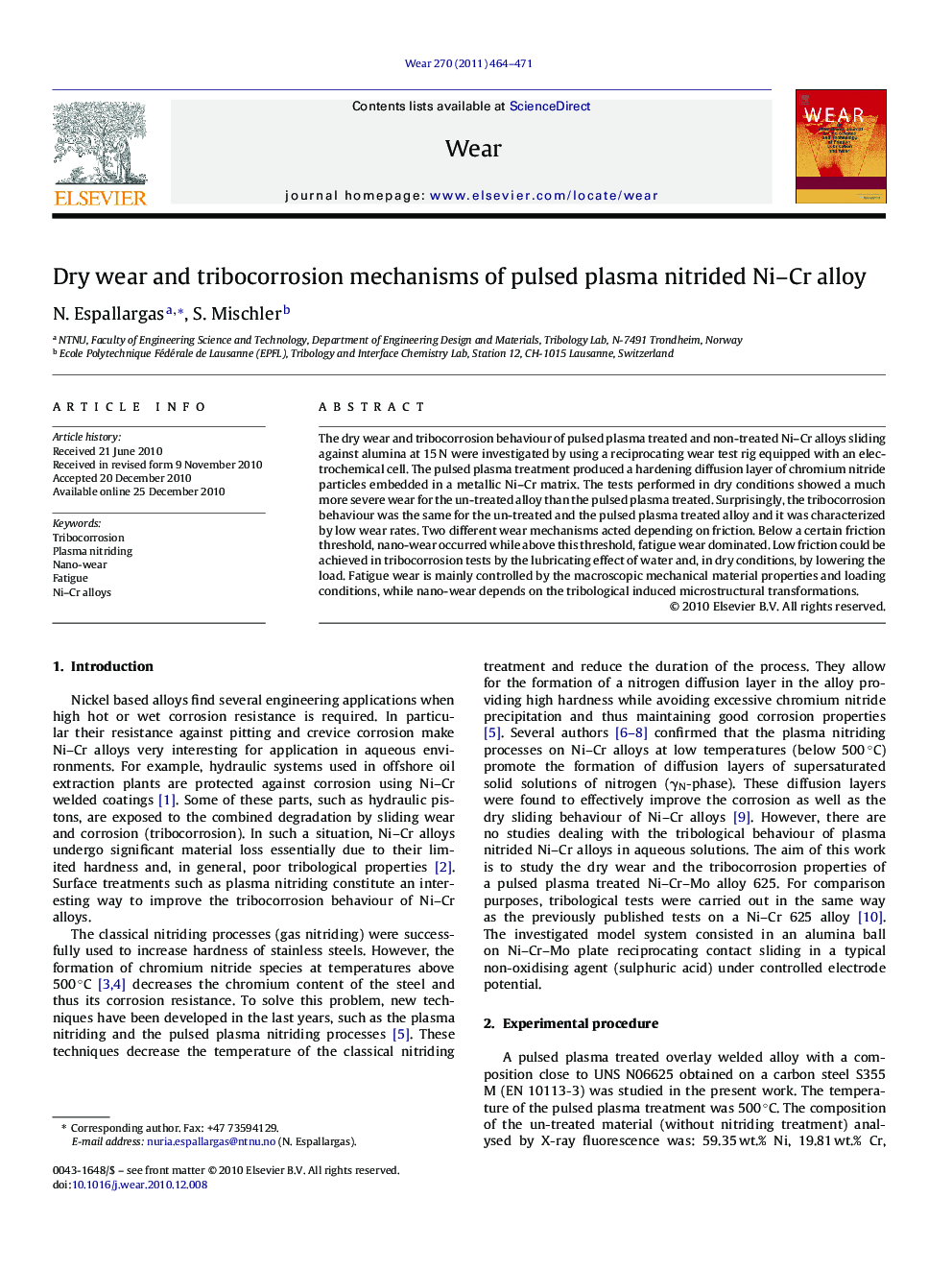| Article ID | Journal | Published Year | Pages | File Type |
|---|---|---|---|---|
| 618376 | Wear | 2011 | 8 Pages |
The dry wear and tribocorrosion behaviour of pulsed plasma treated and non-treated Ni–Cr alloys sliding against alumina at 15 N were investigated by using a reciprocating wear test rig equipped with an electrochemical cell. The pulsed plasma treatment produced a hardening diffusion layer of chromium nitride particles embedded in a metallic Ni–Cr matrix. The tests performed in dry conditions showed a much more severe wear for the un-treated alloy than the pulsed plasma treated. Surprisingly, the tribocorrosion behaviour was the same for the un-treated and the pulsed plasma treated alloy and it was characterized by low wear rates. Two different wear mechanisms acted depending on friction. Below a certain friction threshold, nano-wear occurred while above this threshold, fatigue wear dominated. Low friction could be achieved in tribocorrosion tests by the lubricating effect of water and, in dry conditions, by lowering the load. Fatigue wear is mainly controlled by the macroscopic mechanical material properties and loading conditions, while nano-wear depends on the tribological induced microstructural transformations.
Research highlights► Study of the wear mechanisms of nitrided and non-nitrided Ni–Cr alloy. ► Wear found on the nitrided alloy is the same in dry and tribocorrosion conditions. ► A transition in wear mechanism is found for the non-nitrided alloy from nano-wear to fatigue wear. ► The transition in wear mechanism depends on the mechanical conditions of the system. ► The nano-wear is characterized by the detachment of nano-debris and depends on the tribological induced microstructural transformations.
